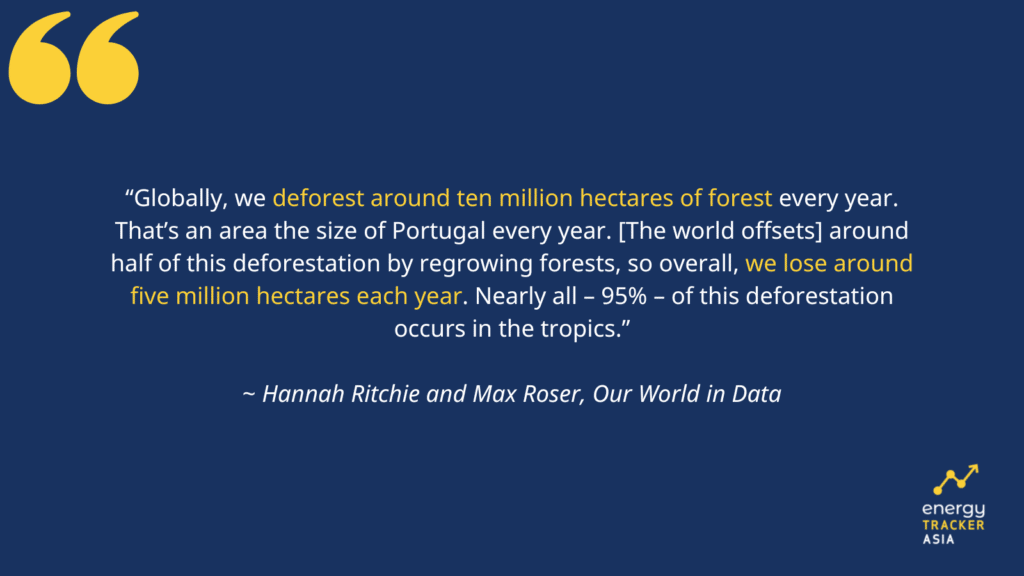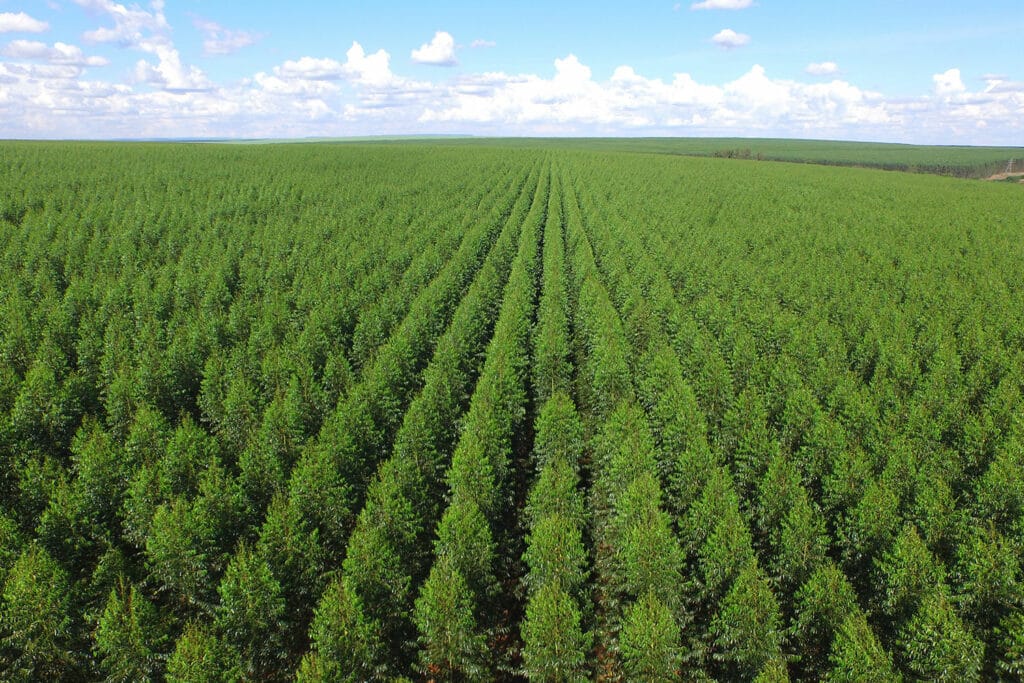Forest Plantation: Social, Environmental and Climate Impacts
Photo ShutterStock
22 December 2022 – by Eric Koons
With deforestation continuing to be a significant driver of socioeconomic stressors, forest plantation is under the microscope. Can forest plantations help reduce the global loss of forest cover and increase natural carbon sequestration?
Importance of Forest Plantation
Forests and other green areas are critically important to the planet’s ecosystem services. In addition to contributing to oxygen production, they absorb carbon dioxide and provide a biome for many plants and animals. Existing forests capture nearly 7.6 billion tonnes of carbon dioxide from the atmosphere annually, 1.5 times what the United States emits.
This gives them an important sociocultural and economic role in communities. Vegetation is a key to combatting climate change and offers opportunities for long-term economic development through cultivation rather than deforestation.
“Globally, we deforest around 10 million hectares of forest every year. That’s an area the size of Portugal every year. Around half of this deforestation is offset by regrowing forests, so overall, we lose around 5 million hectares each year. Nearly all – 95% – of this deforestation occurs in the tropics.”
– Hannah Ritchie and Max Roser (Our World in Data)
As a result, replanting forests or vegetating new areas may be a potential solution to mitigate and stop deforestation while building up local communities and fighting climate change.
What Are Planted Forests?
The United Nations Food and Agriculture Organization (FAO) defines planted forests as mature forests where most individuals are purposely planted or seeded. Planted forests are intensively managed, containing only one or two evenly spaced species. Their role is not for conservation or restoration but for sustainable economic activity.
Benefits of Plantation Forests
The role of a plantation forest is to tackle the main economic drivers of deforestation while also facilitating economic development. This means these projects aim to produce physical resources or food. Additionally, some plantation forests aim to redevelop natural carbon sinks and increase carbon capture.
Plantation Forest vs Natural Forest: What Is the Difference?
One of the main differences between a plantation forest and a natural forest is the amount of biodiversity. Forest plantation or planting trees has a limited number of tree species across an entire forest area. Alternatively, natural forests may have dozens of native species within just a few square metres. This affects overall plant and animal biodiversity and nutrient levels within the soil.
In a 2021 study, researchers found that forest plantation or tree plantation do not mimic natural forests and that conservation-based reforestation efforts better emulate them. However, plantation forests’ primary role is not to replicate traditional forestry biomes but to combat deforestation by providing a sustainable, renewable space for natural resource management.
Negative Effects of Forest Plantations or Tree Plantation
The debate on afforestation, or the creation of new forests, is reinvigorating conversations on the environmental impact of forest plantations. Environmental scientists assert that halting deforestation remains the best option to save forests and maintain natural carbon sinks.

However, even though the creation of managed forests has positive intent, the forests can create lasting damage. A study from Stanford University study states, “The planting of commercially valuable tree plantations in Chile resulted in the loss of biologically valuable natural forests and little if any, additional carbon sequestration.”
Experts know the risks of limited biodiversity within forestry operations, and loopholes abound within plantation trees operations, leaving the door open for further infractions and greenwashing. Other major environmental impacts include reduced soil nutrients, poor water quality, air pollution, limiting agricultural land and soil erosion.
How To Reduce Deforestation?
Governments and companies have pledged to stop or reduce deforestation for decades. As Sarah Sax and Alec Luhn break down in separate pieces for Mongabay, the solution is quite simple. These parties must follow through on pledges and commit financial capital to conservation. A lack of monitoring, transparency and management limits the effectiveness of forestry plantation.
Reducing deforestation means implementing sustainable practices at every level of supply chains, but this rarely happens. For conservation projects, the issue usually rests on financing the monitoring and active protection of natural areas. Furthermore, there needs to be more focus on developing other economic incentives for local communities to protect natural forests. Luhn notes, “International funding measures already on the books are not near enough to stop global deforestation, and in some cases have not been paid out.”
Deforestation and Climate Change
One key consideration to stop deforestation is accountability and sanctions for missed goals. Vegetated areas are critical for climate action and local economic development. While human-developed carbon capture systems can augment natural forests, more is needed to offset ongoing global deforestation. Protecting natural forests, not forest plantation, is critical in limiting climate change.

by Eric Koons
Eric is a passionate environmental advocate that believes renewable energy is a key piece in meeting the world’s growing energy demands. He received an environmental science degree from the University of California and has worked to promote environmentally and socially sustainable practices since. Eric’s expertise extends across the environmental field, yet he maintains a strong focus on renewable energy. His work has been featured by leading environmental organizations, such as World Resources Institute and Hitachi ABB Power Grids.
Read more